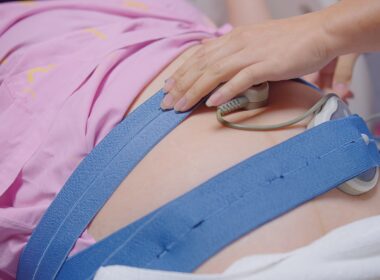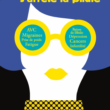A memo that was leaked from the Department of Health and Human Services (one wonders how that happens) signaled that the department was considering cuts in contraceptives funding and an increase of funding for Fertility Awareness Methods (FAM). Immediately several media outlets responded with attacks and misinformation against FAMs. Regardless of our political preferences and our views about this administration, we must continue to speak up and bring awareness of the true effectiveness of FAMs and how they can help all women.
“Fertility awareness methods are often helpful for people who are trying to conceive, but they’re a woefully ineffective method of contraception,” claims self.com. “Trump wants to replace birth control with the dubious ‘Calendar Method,’” writes Newsweek, also claiming that “Because about 30 percent of women experience irregular periods, fertility planning has one of the highest rates of failure of any family-planning method.” (another major misconception with FAMs[i]). The Daily Beast illustrates its views of “how stupid it is to promote ‘fertility awareness’ over real contraception’” by equating it to promoting a car that crashes 25% of the time without warning and requires the driver to be hospitalized to recover.
All of these articles of course refer to the oft-cited yet misleading report by the Centers for Disease Control and Prevention (CDC) that asserts that based on typical use, fertility awareness methods fail 24% of the time. HHS’ website has similar information in their fact sheet about FAMs, providing fodder for their own opponents. These reports continue to confuse modern FAMs with the antiquated rhythm method, and that’s how the study behind the CDC rating came about and why their website needs to be changed. The petition to the CDC sponsored by Natural Womanhood and FACTS has been signed by over 6,300 people so far, and explains in detail how the CDC report is based on weak research.
Here is the evidence-based data for three of the most popular fertility awareness methods, based on an article published in May 2013 by the Osteopathic Family Physician Journal[ii] and a more recent study of the Marquette method.
- Sympto-thermal Method: unintended pregnancy rate with perfect use is 0.4%, with typical use 1.6%
- Marquette Method: unintended pregnancy rate with perfect use 0%, with typical use 6.8%
- Billings Ovulation Method®: unintended pregnancy rate with perfect use 1.1%, with typical use 10.5%
New technology is also allowing users greater ease of use and even greater success with these methods. Natural Cycles, a fertility awareness app, was the first of these apps to be certified as a medical device and officially approved by a European health agency, and claims a 93% effectiveness rate with typical use, compared to the 92% official rate for the Pill.
A test study of 50 fertility apps conducted by FACTS and published in the Journal of the American Board of Family Medicine classified the best ones and identified six that had proven high accuracy for avoiding pregnancy.
Now, the context of the media attacks is that apparently HHS is interested in teaching these methods to teens, which brings a larger philosophical debate: Will these methods increase teen pregnancy? What about STDs? What should we teach our teens?
First of all, let’s consider the typically prescribed solutions for teens: the Pill, and increasingly, because of the known side–effects and risks caused by hormonal contraceptives, the copper IUD. An increasing body of research shows that putting teenagers on the pill can have serious effects, including a significant increase in depression. While the copper IUD eliminates some of these effects, it still has potential for impacting a young woman’s body. A recent article by Nicole Jardim explains how higher copper levels in the body can lead to “severe anxiety and panic attacks, depression, ADHD, acne (caused by lowered zinc in relation to copper), eczema, psoriasis, hair loss, anemia, increased anger and rage, brain fog, spaciness, paranoia, fatigue (like tired all the time), low libido in women and men, estrogen dominance, PMS, and post-partum depression to name a few.” Other risks include pelvic inflammatory disease (PID), displacement, and perforation.
While fertility awareness methods do not protect against STDs (neither do IUDs, which bring a false sense of safety), they can actually be life-changing for girls who are properly equipped with this knowledge. In our article “Cycle mindfulness: what happens when you teach fertility awareness to teen girls,” we reported scientific evidence that shows how by giving young girls critical knowledge about themselves, they become more confident, more able to plan and make their own decisions, more likely to resist peer pressure and group pressure if the group proposes something they disagree with. Most importantly, they are much less likely to engage in premature sexual activities. Despite the heavy-handed promotion of contraceptives, the rates of STDs continues to increase to dramatic levels, and a risk less reported on but just as real: the emotional impact of early sexual activities on girls continues to take its toll[iii].
When this article refers to fertility awareness methods (FAM), or natural family planning (NFP), we are referring to Fertility Awareness-Based Methods, evidence-based methods of cycle charting which can be used as effective forms of natural birth control when learned by a certified instructor.
Read also: CDC Changes Effectiveness Rating on Fertility Awareness Methods (published May 2019)
Notes and references
[i] The majority of FAMs are effective with irregular cycles, because every woman produces visible signs that indicate when the fertility window starts and ends each cycle. In fact, the methods remove the fear and uncertainty that often comes with delayed periods and can help diagnose the root causes of an irregular cycles.
[ii] Fehring, R., Schneider, M., Raviele, K, & Rodriguez, D. “Randomized Comparison of Two Internet-Supported Fertility Awareness Based Methods of Family Planning,” Contraception. 88(1): 24-30, 2013.
[iii] “Sexually active teens are three times as likely to report being depressed as virgins,” research quoted in Girls Uncovered: New Research on What America’s Sexual Culture Does to Young Women, by Joe S. McIlhaney, Jr., MD, and Freda McKissic Bush, MD. 2011, Medical Institute for Sexual Health.
Photo: public domain published by Max Pixels
Last updated October 28, 2020.







